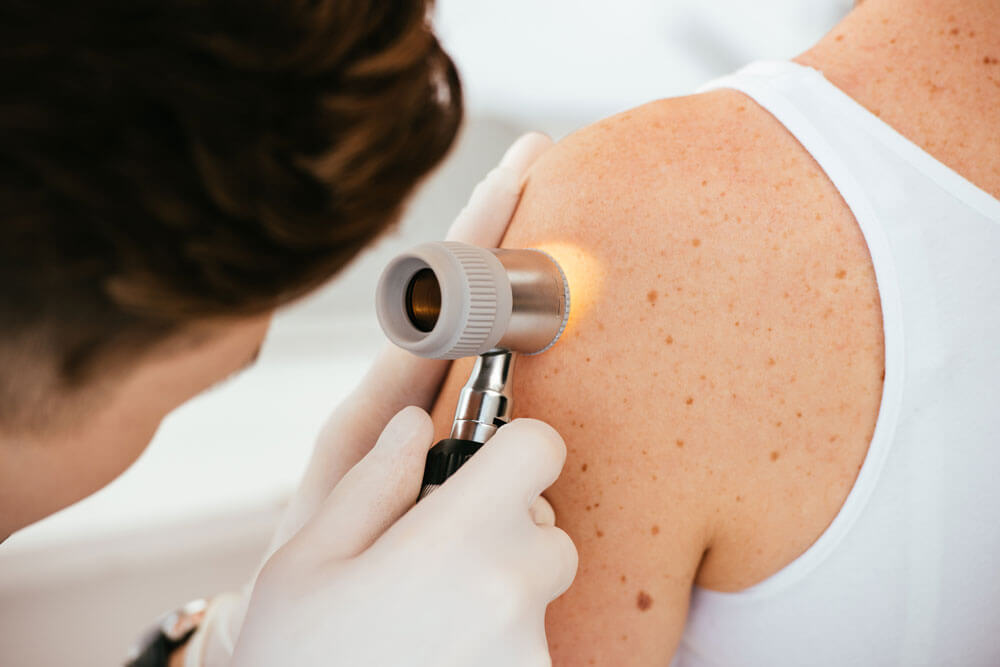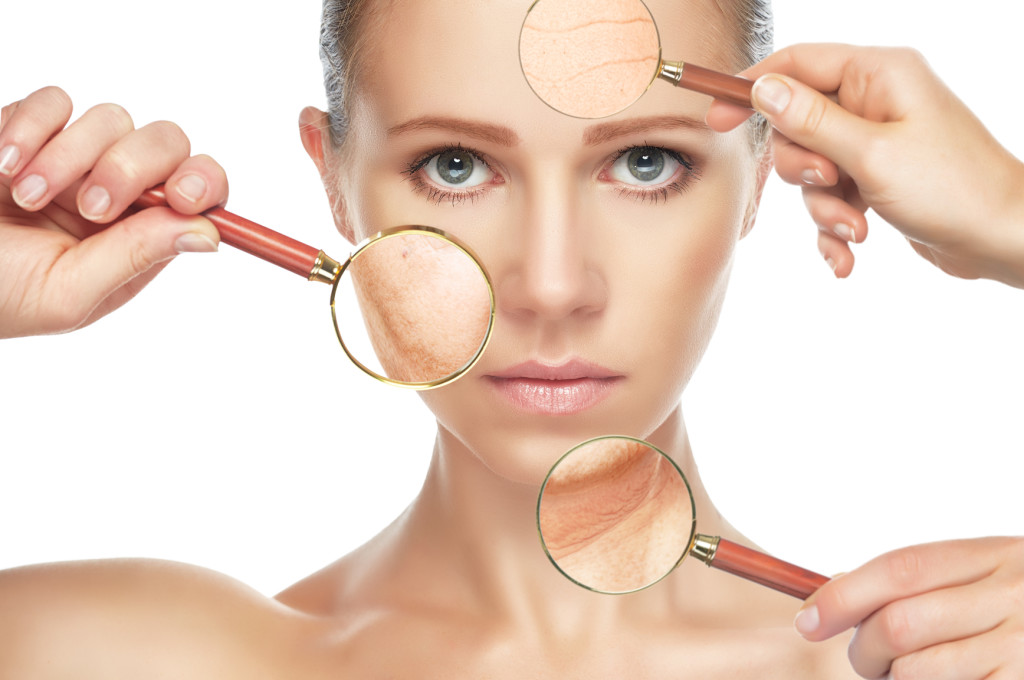Find the Best Rosacea Treatment Raleigh NC to Control Skin Flare-Ups
The Role of a Skin Specialist in Detecting and Treating Different Skin Problems
The role of a dermatologist expands far past basic skin treatment; it encompasses the intricate procedures of detecting and dealing with a large range of skin problems. The complexity of skin conditions typically needs a diverse technique that consists of not just medical interventions yet likewise client education and preventative methods.
Importance of Skin-related Competence
The knowledge of skin specialists is essential in the diagnosis and monitoring of skin problems, as they have specialized understanding that prolongs beyond basic clinical training. This sophisticated understanding is important for properly identifying a vast array of skin conditions, which usually provide with overlapping signs and symptoms that can puzzle non-specialist practitioners. Skin doctors are trained to set apart between various skin problems, ensuring ideal treatment plans are carried out swiftly.
Furthermore, the field of dermatology encompasses an one-of-a-kind combination of medical abilities and advanced innovation. Skin doctors make use of advanced diagnostic tools, such as dermatoscopes and skin biopsies, to evaluate skin sores and determine their nature. This technical efficiency permits very early detection of potentially major problems, including skin cancers, which can significantly improve client results.

Typical Skin Conditions Diagnosed
Numerous skin problems can present with differing levels of extent and complexity, making skin-related knowledge essential for exact diagnosis and management. Among the most prevalent conditions are acne vulgaris, dermatitis, psoriasis, and dermatitis.
Acne vulgaris, identified by the visibility of papules, pustules, and comedones, primarily impacts adolescents but can persist right into adulthood. Eczema, or atopic dermatitis, is a persistent inflammatory problem that results in dry, itchy, and irritated skin. Psoriasis is an autoimmune condition that shows up as red, scaly plaques, mostly on extensor surfaces, and can dramatically impact the top quality of life.
Various other common conditions include rosacea, which provides with face flushing and visible blood vessels, and seborrheic dermatitis, often resulting in dandruff and oily patches on the scalp. Fungal infections, such as tinea pedis (professional athlete's foot) and tinea corporis (ringworm), are likewise regularly experienced.
These differed problems require a comprehensive understanding of pathophysiology, along with expertise of restorative choices, to direct efficient therapy techniques - Dermatologist Raleigh NC. Via exact diagnosis, skin doctors can provide tailored management plans that attend to both the symptoms and underlying root causes of these common skin disorders
Analysis Strategies Used
Exactly how do skin specialists accurately diagnose numerous skin conditions? Skin doctors use a mix of scientific analyses, diagnostic tools, and specialized techniques to make certain accurate identification of skin problems. The preliminary step generally involves a comprehensive clinical history and physical exam. Throughout this process, skin doctors evaluate the individual's symptoms, start, duration, and any type of potential triggers.
One of the key analysis strategies is dermoscopy, which uses a portable gadget to amplify skin lesions, permitting thorough evaluation of frameworks not noticeable to the nude eye. Additionally, skin biopsies are frequently executed, where a tiny example of skin is eliminated for histopathological evaluation. This technique is invaluable for diagnosing problems such as cancer malignancy and other skin cancers.
Spot screening is another important method used to determine call dermatitis by exposing percentages of potential irritants to the skin. Research laboratory tests, including blood examinations and cultures, may be performed to rule out systemic issues or infections. Jointly, these diagnostic methods allow dermatologists to develop a thorough understanding of skin problems, bring about accurate medical diagnoses and notified individual monitoring.

Therapy Options Available
A wide array of treatment choices is readily available for managing skin disorders, tailored to the specific problem and individual person demands. Dermatologists use both systemic and topical therapies, relying on the extent and kind of skin condition. Topical treatments, such as corticosteroids, retinoids, and calcineurin inhibitors, are typically suggested for look at here problems like psoriasis, eczema, and acne. These representatives target inflammation and promote skin recovery.
For a lot more severe problems, systemic treatments may be required. These include oral drugs such as prescription antibiotics for microbial infections and immunosuppressants click here for more for autoimmune problems. Biologics, a more recent course of drugs, have actually shown efficacy in dealing with chronic inflammatory problems like psoriasis and atopic dermatitis.
Along with pharmacologic treatments, dermatologists might recommend procedural options such as laser photo-therapy, therapy, or chemical peels (Dermatologist Raleigh NC). These treatments can resolve coloring concerns, acne scarring, and other skin abnormalities effectively
Moreover, lifestyle alterations, including proper skincare regimens and sunlight security, play a vital role in the overall management of skin conditions. By integrating these therapy techniques, dermatologists intend to boost person end results and boost high quality of life for those impacted by skin conditions.
Client Education And Learning and Assistance
Empowerment with expertise is necessary in the management of skin problems, as patient education and learning and support substantially influence treatment outcomes. Skin doctors play a critical function in supplying individuals with comprehensive info about their conditions, therapy alternatives, and self-care strategies. Reliable communication cultivates a collaborative atmosphere where clients can proactively get involved in their own care.

Support prolongs past education; it encompasses psychological confidence and recurring motivation. Skin specialists must develop a safe space for people to express their worries and ask questions. Resources such as educational handouts, web sites, and support system can better empower people, enabling them to get in touch with others encountering comparable obstacles.
Eventually, an educated patient is most likely to take part in their therapy trip, causing far better adherence, satisfaction, and boosted wellness end results. The skin doctor's role in patient education and support is fundamental to optimizing the administration of skin conditions.
Conclusion
In final thought, skin doctors play a vital function in the efficient medical diagnosis and therapy of a large range of skin disorders. The payments of dermatologists substantially enhance the quality of life for those affected by skin conditions.
The role of a skin doctor expands much beyond fundamental skin care; it encompasses the intricate procedures of diagnosing and treating a vast variety of skin conditions. Dermatologists make use of innovative analysis devices, such as dermatoscopes and skin biopsies, to examine skin sores and identify their nature. Ultimately, the specialized training and experience of skin specialists are essential in giving extensive treatment for clients with skin conditions.
Additionally, skin biopsies are often executed, in which a tiny sample of skin is eliminated for histopathological evaluation. Collectively, these analysis methods allow skin specialists to develop a detailed understanding of skin disorders, leading to accurate diagnoses and educated individual monitoring.